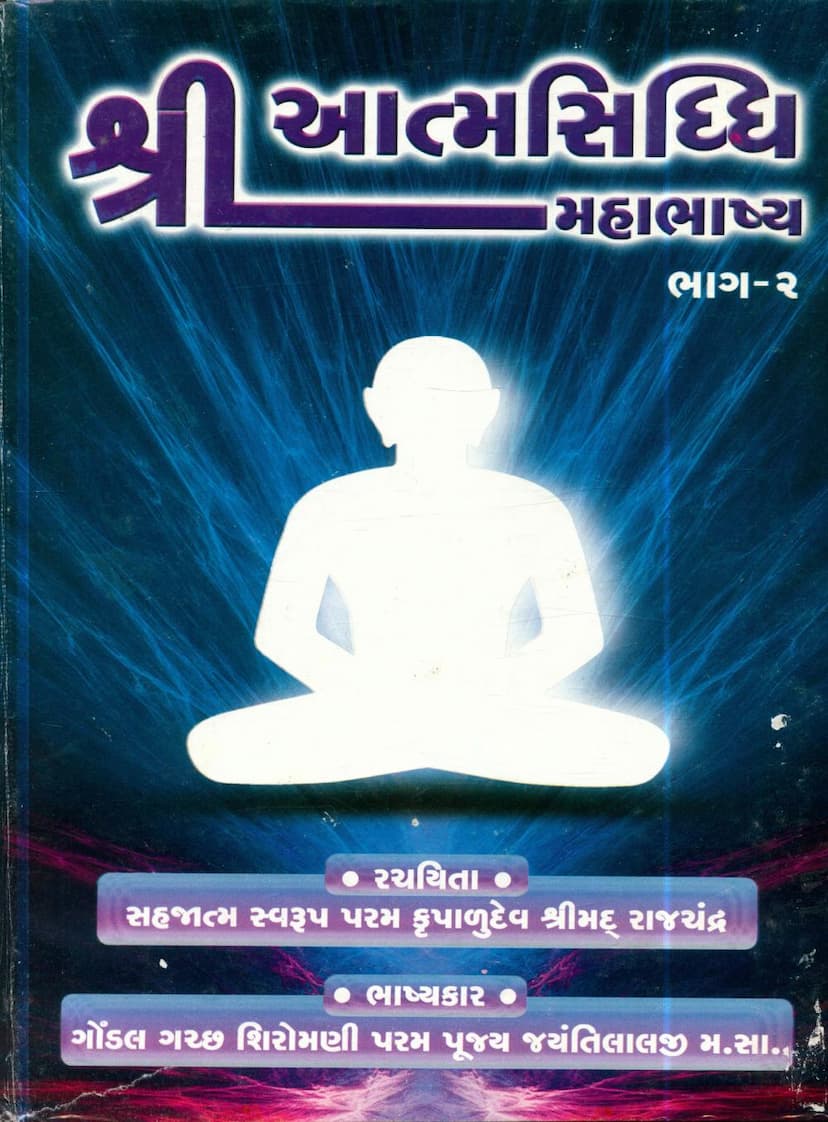Atmsiddhi Mahabhashya Part 02
Added to library: September 1, 2025

Summary
The book "Atmsiddhi Mahabhashya Part 02" by Shrimad Rajchandra, commented on by Jayantilalji Maharaj, is a comprehensive commentary on Shrimad Rajchandra's "Atmasiddhi," a spiritual poem. This second part of the commentary delves deeply into the philosophical and spiritual concepts presented in the poem, aiming to guide spiritual seekers.
The text is structured around the six core principles or "pads" of Atmasiddhi, which are elaborated through verses and detailed explanations. The commentary focuses on understanding the nature of the soul, its eternal existence, its role as the doer and experiencer of its actions, the concept of liberation (moksha), and the path to achieve it.
Key Themes and Concepts:
- The Soul (Atma): The text establishes the existence of the soul as an eternal and fundamental reality. It distinguishes the soul from the physical body and the senses, asserting that the soul is the true entity, distinct from its temporary form.
- Eternity of the Soul: The commentary emphasizes that the soul is not subject to birth or death, making it eternal and unchanging in its essence.
- Causality and Action (Karma): It explores the concept of karma, explaining that the soul is the doer of its actions and the experiencer of their consequences. The text clarifies the relationship between actions and their results, emphasizing personal responsibility for one's karma.
- Illusion of the Self (Dehadhyas): A significant portion of the commentary addresses the misconception that the self is the body. It aims to dispel this illusion by differentiating the soul from the physical form and the senses, which are merely instruments.
- The Path to Liberation (Moksha): The text guides readers towards understanding the path to liberation, which involves self-realization, purification of the soul, and establishing oneself in the soul's true nature. This path is presented as the ultimate goal of spiritual life.
- Philosophical Integration: The commentary skillfully integrates insights from various Indian philosophical schools, such as Vedanta and Buddhism, to provide a comprehensive understanding of Jain philosophy. It highlights the unique perspective of Jainism, particularly its emphasis on Anekantavada (non-absolutism), in understanding these profound truths.
- Critique of Materialism and Nihilism: The text implicitly or explicitly addresses viewpoints that deny the soul's existence or its eternal nature, refuting them through logical reasoning and spiritual inquiry.
- Role of the Guru: The importance of a spiritual guide (Guru) is implicitly acknowledged, as the commentary is presented as an elucidation of the original teachings. The dedication and respect shown to the Guru in the introductory and concluding remarks underscore this aspect.
- Language and Style: The commentary is written in Gujarati, aiming for clarity and accessibility. The author, Jayantilalji Maharaj, is praised for making profound philosophical concepts understandable through simple language and deep contemplation. The text is presented as a valuable resource for spiritual seekers and scholars alike.
Structure and Content:
The book follows the structure of Shrimad Rajchandra's Atmasiddhi, systematically addressing each "pad" or principle. The commentary meticulously analyzes each verse, exploring its literal meaning, allegorical interpretations, and deeper philosophical implications. It often uses analogies and examples to elucidate complex concepts, making the spiritual journey accessible. The introductory sections and testimonials from various spiritual figures highlight the profound impact and value of this commentary. The text also engages with potential counter-arguments or misconceptions, addressing them with reasoned explanations. The emphasis is consistently on leading the reader towards self-realization and the ultimate goal of liberation.